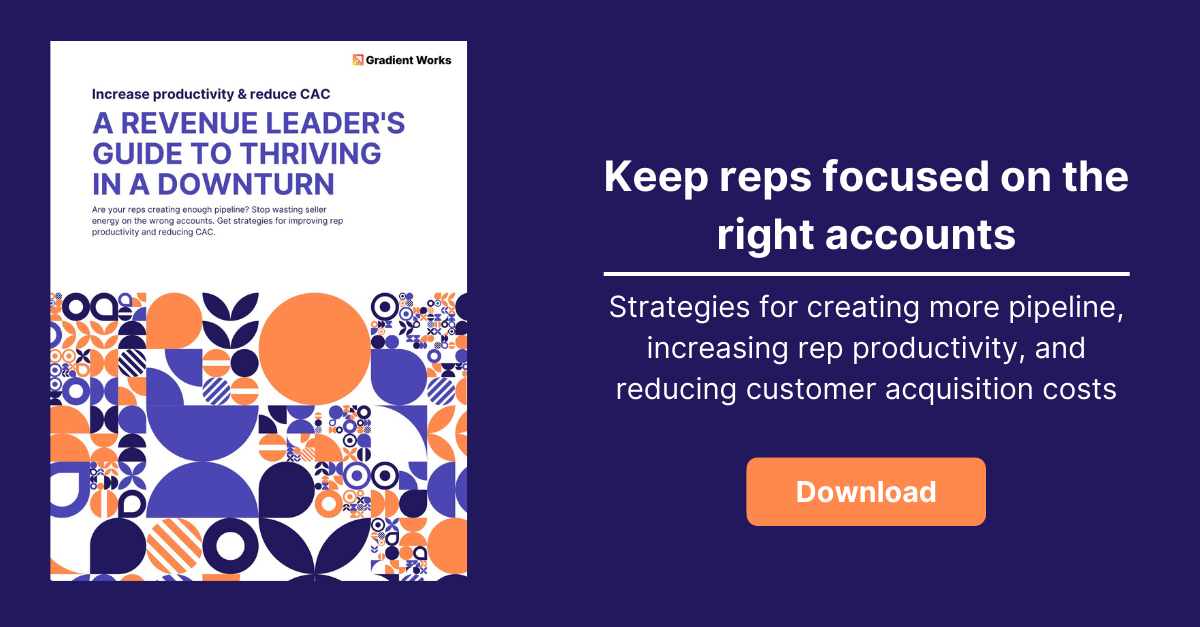Gartner reports that 43% of B2B customers prefer "a rep-free experience" (and that number predictably increases when you look at younger buyers, like 54% of millennials compared to only 29% of baby boomers). Further, B2B companies predict "that 59% of their annual B2B purchases will be through websites and other online channels by the end of 2023."
We all know about these B2B sales trends. The future of sales is inside sales. More and more sales are moving online, using virtual meeting software instead of face-to-face meetings. Sales teams are rethinking how they distribute accounts (geographic territories are dead, haven't you heard?), developing virtual selling skills, using more automation, and generally evolving their sales processes.
Doug Bushée, Senior Director Analyst at Gartner, says, "CEOs and chief sales officers recognize that functional silos handing off clients from one function to the other, and using different technologies, people and processes, are a barrier to revenue growth. As a result, progressive organizations are beginning to align sales, marketing and customer success technology, data, and KPIs to provide an end-to-end view of the revenue-generating engine."
Well, duh (no offense, Doug). This is revenue operations. Gartner predicts that 75% of the world’s fastest-growing companies will adopt revops by 2025. As we know, many already have. As Gartner puts it, this represents a "shift from sales enablement to revenue enablement to support revenue operations in today’s complex B2B buying and selling environment." (Emphasis ours.)
But what does this enablement shift actually mean in practice? How can you future-proof your sales team and ensure you're thinking beyond simple sales enablement to embrace a revenue enablement mindset?
What is revenue enablement?
Understand your customer lifecycle. Know exactly what happens as a customer progresses through your organization. What touchpoints have they received? Who have they interacted with? What do they need? How do they perceive your company? Are they getting what they need? Talk to customers to truly understand their needs. Map customer flows, and make sure everyone in your company truly understands your customer lifecycle.
Focus on handoffs. You're always going to have customer handoffs. Work to make them flawless. Make sure the customer feels taken care of. Don't let important intel fall through the cracks when a customer moves from one contact to the next. Document everything in your CRM, which must be your source of truth. Aim for smooth, error-free handoffs.
Enable everyone, not just your sales team. Be sure your marketing and customer success teams receive the same training and development that your new business sales teams receive. In fact, enable them together. Create enablement programs and materials that meet everyone's needs, and ensure consistency in messaging and approach.
Audit your tech stack. Are you using different tools across your GTM teams? Do sales reps use your company's CRM the same way your account managers do? You probably have overlaps in your tech stack, possibly even competing technology across functions. Simplify your stack, and find solutions that work for everyone, instead of bespoke applications for every function's use cases.
Communicate more internally. Create opportunities for cross-team interactions. Be sure everyone who touches a customer in any way has a chance to get to know and learn from their peers in other functions. You will have to work to break down some of these long-standing silos, and intentionality goes a long way. Set up lunch and learns, bring in speakers from other teams, share success stories, open shared Slack channels, etc... Do whatever you can to get your teams working together more. Stress collaboration over competition.
Share KPIs and OKRs. A good way to make sure everyone's working toward the same goal is to give them shared goals. Consider how you measure success - is it the same across customer teams? Are marketers measured on different dimensions than customer success managers? Probably. But are they measured on competing dimensions? Be sure you're creating KPIs that are mutually reinforcing, and not setting teams up to compete with each other.
What are you doing to take a revenue enablement approach in your company? We'd love to learn more about how this looks in real organizations. Find us on LinkedIn.





